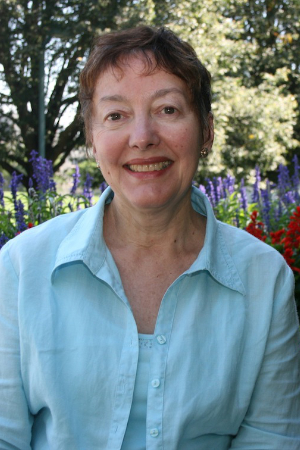Madeline Lennon
In what way did your experience at The Department of Visual Arts at Western impact you & your career path?
My experience in VA has actually been much of my academic career. The year after the Department of Fine Art (its original name) was established, I arrived in London with a degree in Literature in hand and several years of teaching experience. At that time I was considering changing my field to the History of Art. As a part-time student, I took the introductory course, which was a combination of the History of Western Art, taught by Professor William Hart, and Introduction to Studio taught by Prof. Roly Fenwick. I also took the course in Renaissance Art taught by Prof. Bernard Bonario. In those days, the department was housed in Talbot College and all classes including studio were taught in lecture rooms (no windows or ventilation for studio). After a year away studying art history in Paris, I returned to London for a year, taking five courses in art history. By this time the department had moved and was housed in what we called “portables” – temporary structures left over from the second World War. The three buildings were arranged on the current site of the VA building, in a U shape. There are many stories from those days. In the spring the buildings would flood and staff wore rainboots. The Department Head was Dr. William Dale, a medievalist and the best story came from him. Apparently raccoons were living the ceiling and one day as he worked at his desk, one of them peed on his head. I went off to the University of Toronto for five years of graduate studies. In the early 1980s the department name changed to Visual Arts. At the same time there was a fear that it would be closed because the buildings were in a terrible state and there was no money for a new building. The Dean in the late 1980s wanted to save the department, and he hired a new Chair, Alice Mansell to take on the task. She worked with the administration on a major fundraising drive. This is how Labatt gave a million dollars and the then-NDP government provided the rest. Ray Moriyama was hired and the building became a reality. The other drive by Professor Mansell was to introduce a graduate program, and faculty at that time developed the MA and MFA programs (Professor Mark Cheetham, now at the University of Toronto was one of the main authors). My career in the department started in 1979 and for a few years I replaced several colleagues during their sabbatical leaves. Then I was hired permanently to work in the Modern Languages and Literatures Department. It was in 1995 that I returned to VA as Department Chair. When I first started teaching in Visual Arts back in the late 70s, one of the most interesting developments for me was the exchanges and interactions with studio professors and contemporary artists in the community. Although my areas of specialization were Renaissance and Baroque art history, at that time I became interested in contemporary art and began curating exhibitions. The other special interest that developed at that time was the situation with women in art and art history (they were pretty much invisible). I developed the first course on women artists that was taught in the department, and worked with contemporary women artists, curating and writing about their work. These paths influenced the direction my career took over the years.
What is something you are passionate about? What are you working on right now?
My passion has been art and art history. Even after retiring from the department in 2008, I continue to research and write in the field. The other thing I have been passionate about is teaching and my students. It has been a joy for me to continue to hear from students, to visit with them when possible. In fact, I have just been to London, England, for a great visit with Alison Turner (a VA student in the 1990s) who continues to paint and exhibit there.
Why do you think a career in the Visual Arts is important / valuable?
A career in the Visual Arts can take many different forms – what is common to all tends to be the ability for the person so trained to use creative intelligence to solve all sorts of problems. Our students have gone on to careers in art production, curation, gallery ownership; but also in business, government, fashion, and other industries.
What would your hopes be for the next 50 years of Visual Arts at Western?
My hope for the future of the Visual Arts Department is that it remains a vibrant, creative place where students, faculty and staff are respected and given the support they need to continue to explore the many issues that will face our society in the coming decades.







